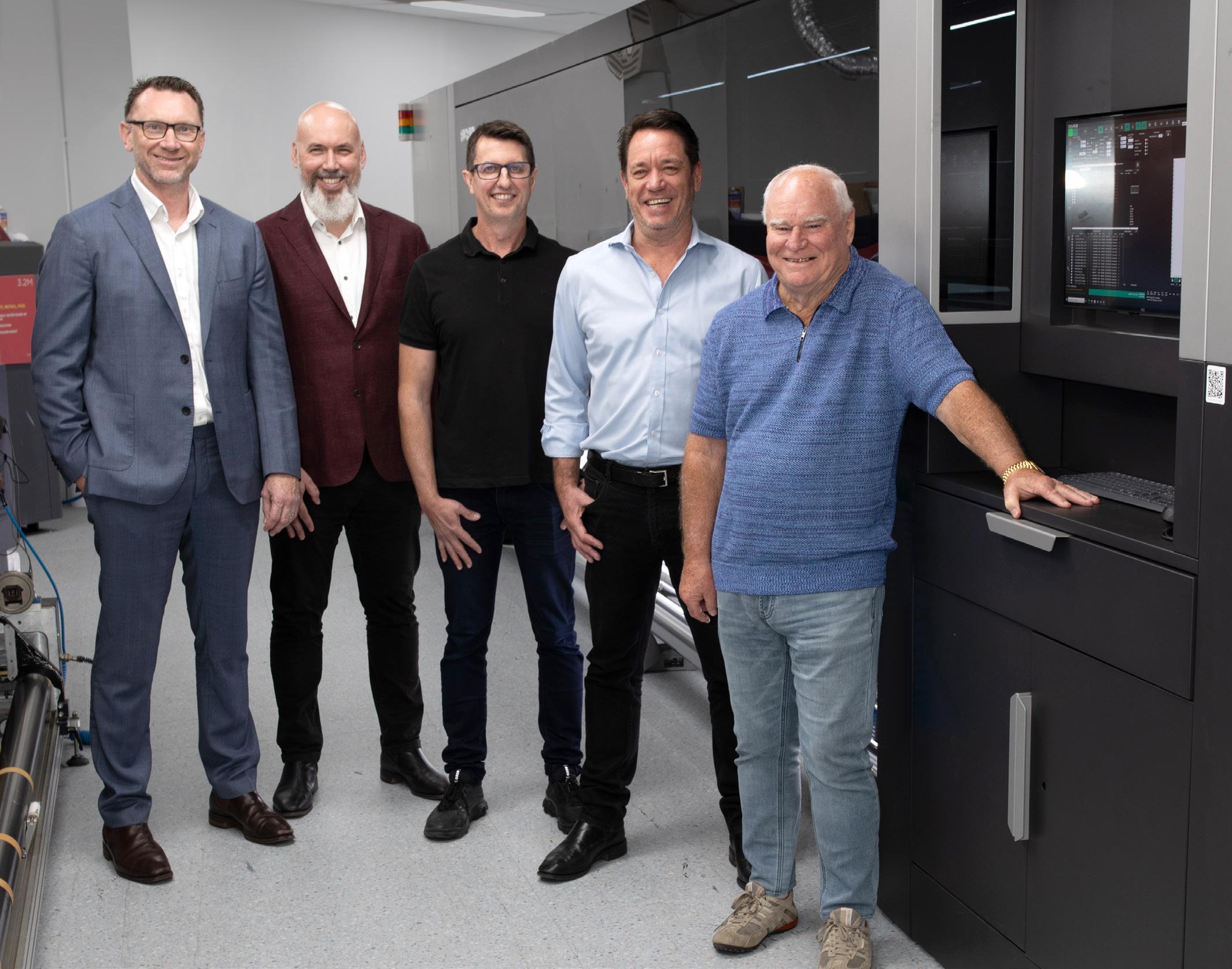
9 minute read
COVER STORY: CACTUS IMAGING INVESTS IN FIRST LOCAL FUJIFILM ACUITY ULTRA R2 LED
Cactus Imaging invests in first local FUJIFILM Acuity Ultra R2 LED
Cactus Imaging is the first printer in the Southern Hemisphere to experience high quality, versatility of the newly installed FUJIFILM Acuity R2 LED five-metre roll-to-roll machine
Cactus Imaging, based in Sydney, is a name that resonates not only within Australia but across the international grand format printing landscape. It’s widely acknowledged as one of the world’s foremost digital printing companies, boasting a prestigious status for delivering value, quality, and punctuality, while housing one of the largest grand format production plants in the Asia Pacific region, complete with state-of-the-art equipment.
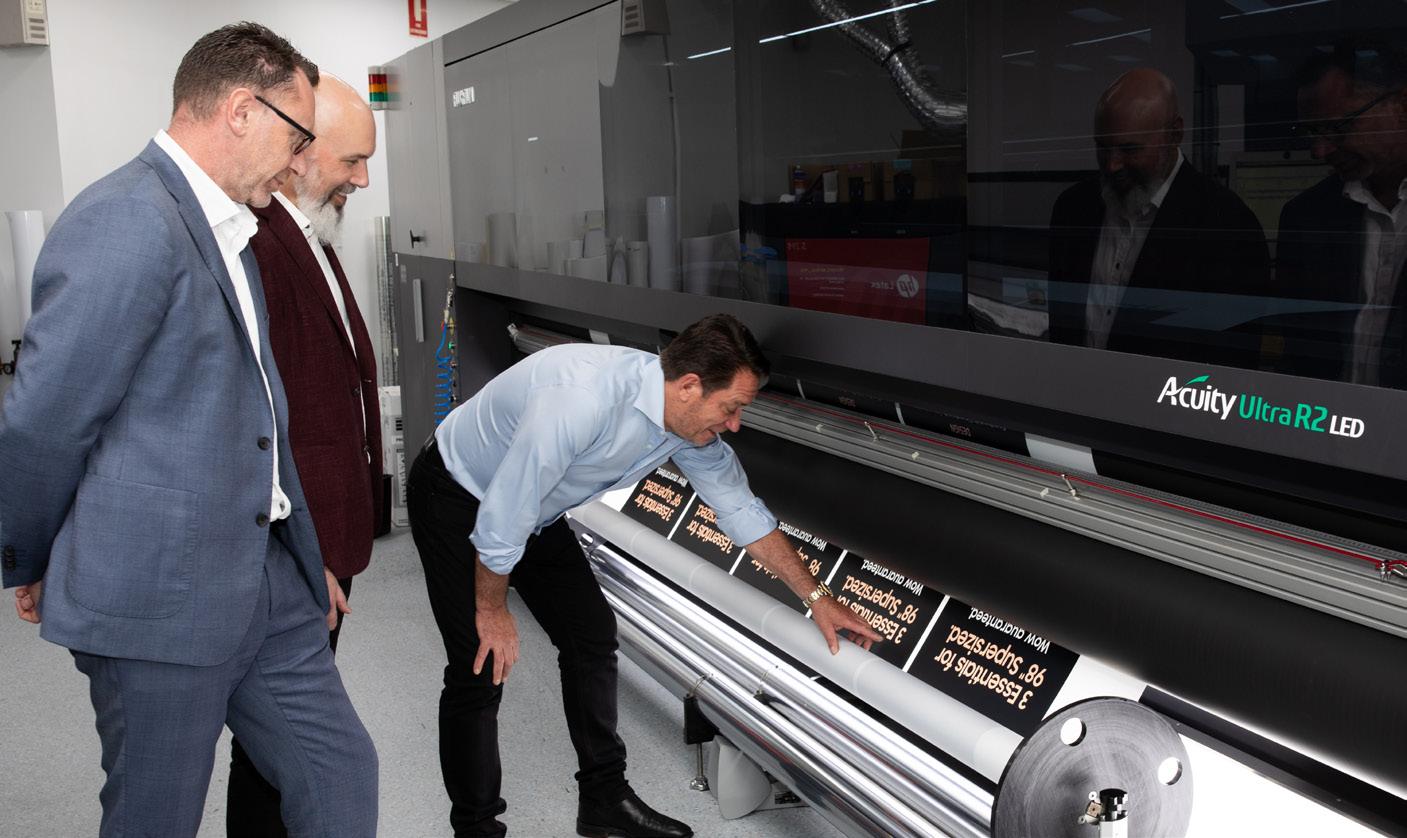
In an industry where staying at the cutting edge is paramount, Cactus Imaging has forged a robust partnership with FUJIFILM over the past nine years. This alliance has been instrumental in enhancing print quality and driving innovation within the grand format print market.
FUJIFILM Australia division manager Troy Neighbour treasures this special relationship, noting that “Nine years ago, the company became the first in Australia and in the Southern Hemisphere to install our Acuity Ultra R1 machine.”
However, Cactus Imaging’s contribution went far beyond being an ordinary client. It actively collaborated with FUJIFILM’s Research and Development team in the UK, providing invaluable feedback to improve machine usability and capabilities. This partnership’s fruitful efforts have led to the incorporation of their recommendations in subsequent generations of Acuity Ultra.
The bond between the two companies is so close that Cactus Imaging had direct access to FUJIFILM’s R&D centre in Broadstairs, situated in the idyllic English countryside. It provided engineers and designers with real-world feedback, effectively influencing and shaping the usability, capabilities, and performance of these machines.
Neighbour highlights the value of this partnership, stating, “Cactus’ team has an extensive knowledge, they are professionals who know exactly what the customers want, have an immense knowledge of how machines should work, they cooperate with multiple brands, so we almost treat the company as our beta site.”
In an era where inclusivity is highly prized, FUJIFILM’s approach to open R&D was a testament to their commitment to involving customers at every stage of development.
Next generation tailored to printers’ needs
FUJIFILM’s unveiling of the Acuity Ultra R2 marked a significant milestone after years of first-generation installations. This release was part of its strategic vision to redefine the blueprint for wide format printing.
It seamlessly integrated third-generation technology from the FUJIFILM platform, ideal for the kind of work that Cactus specialises in, including billboards, outdoor media, and various signage and display projects.
Cactus Imaging co-founder and general manager Keith Ferrel confirms that the Acuity Ultra R2 plays a pivotal role in projects that demand exceptional quality. He notes, “We use this machine for really high-quality work, we provide print for several bus shelters, we print a significant number of fabrics and also a lot of backlit work, which benefits directly from the superb whites and solid blacks.”

Available in both 5m and 3.2m versions, this new machine not only maintains the high levels of quality and reliability of its predecessor but also brings numerous design improvements to the table, enhancing ease-of-use and overall productivity.
Ferrel points out some key enhancements, stating, “The new version of Acuity Ultra is more reliable. It requires less training, and its graphical interface is easier to operate. This machine also offers us more features, like the smoothing function, for instance.”
One remarkable design change is the enclosed design that eliminates stray UV light, negating the need for a light curtain. Functionally, the machine has been thoughtfully engineered with maintenance and ink supply on the same side, providing operators with easier access and more workspace when performing routine tasks. An external visual light has also been integrated to swiftly alert operators about low ink levels without the need to peer inside the machine.
The Acuity Ultra R2 is distinguished by its larger ink tanks, a seemingly simple change but one that optimises ink usage. It ensures that all the ink from a standard can is used when refilling, eliminating the clutter and mess of half-used ink cans often found in print workplaces. The ink tanks have also been designed for easy access during refills.
Maintenance-free ink pumps have been integrated into the new machines to increase uptime, and a new print viewing window allows the operator to monitor job progress without leaving the workstation.
The workstation itself has undergone a redesign, featuring additional desktop space, a drawer for tools or personal items, integrated lighting, and a larger monitor for enhanced usability and better display of print jobs.
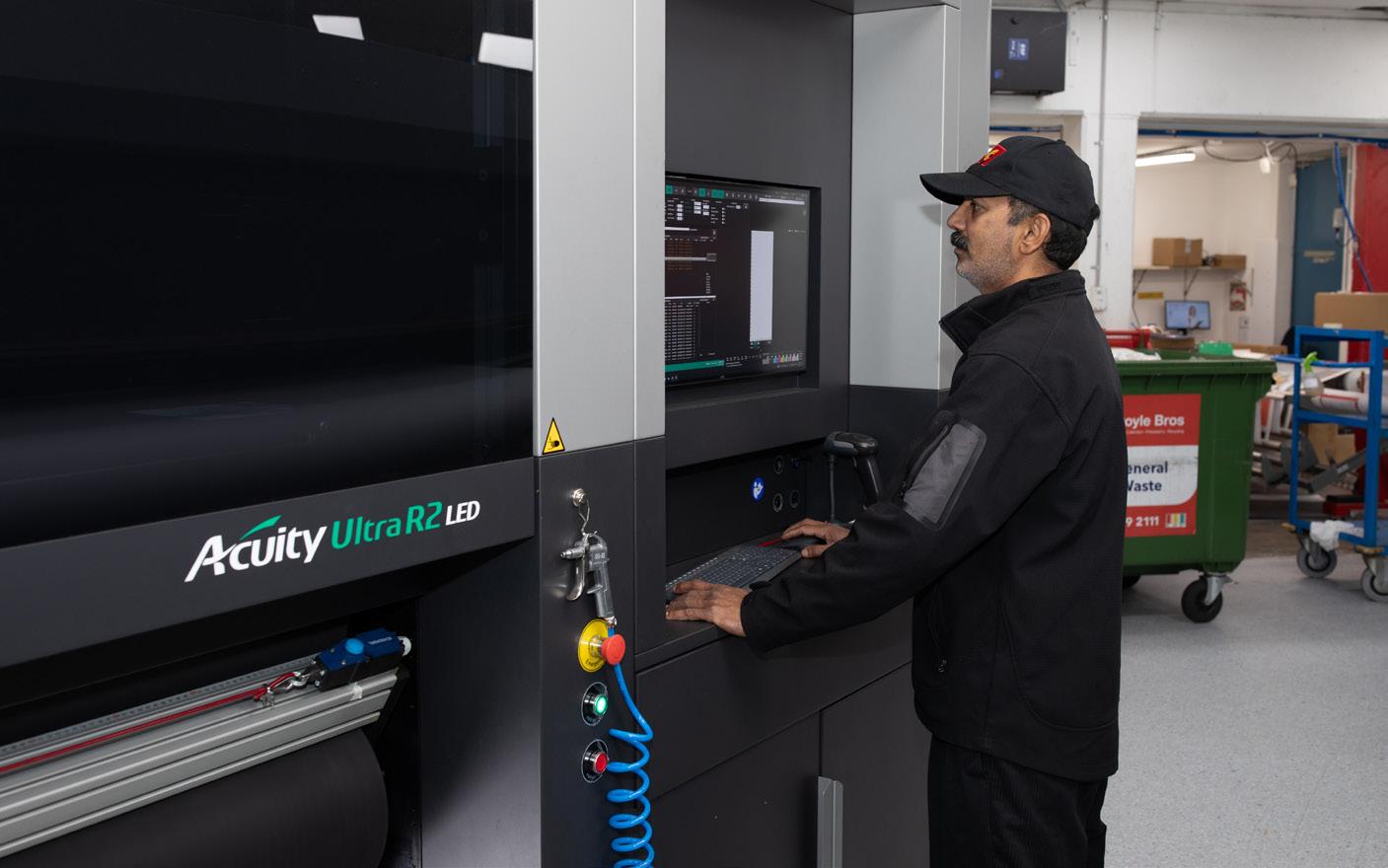
One of the notable design improvements is the full integration of the separate chiller unit, which used to accompany the original Acuity Ultra. This integration frees up considerable workspace and reduces clutter, contributing to a more organised and efficient printing environment. The Acuity Ultra R2 also features a crash detector with increased sensitivity and dual-way activation, allowing for the early identification and resolution of potential issues.
Furthermore, it incorporates a new low scratch surface platen and automated meniscus control, ensuring even greater precision and consistency in ink droplet placement. Both the 5m and 3.2m versions of the machine feature an improved roller design to prevent media wrinkles.
Like its predecessor, the Acuity Ultra R2 is available in various colour configurations of up to eight channels. Recognising the diverse needs and priorities of modern print businesses, it comes with options for conventional UV curing as standard or an LED UV curing system for six-colour and white configurations. This flexibility aligns with Cactus Imaging’s commitment to delivering quality at a premium speed while keeping costs under control.
Cost saving with premium quality and speed
FUJIFILM Australia’s key objective is to provide cost-effective solutions to its customers while delivering exceptional quality and high-speed printing. Upgrading from the Acuity R1 to the Acuity R2 LED machine was a natural progression for Cactus Imaging.
As Troy Neighbour explains, “This is the flagship model in the Acuity range, which offers a very similar 5008W ink set to the R1 model – with six colours plus white, and it can also print up to 400 square metres an hour.”
The combination of quality and speed empowers Cactus Imaging to respond swiftly to its customers’ demands.
Ferrel emphasises the significance of this, stating, “To give you an example, sometimes we receive work on Friday afternoon, and they are being installed on Saturday morning. Without the FUJIFILM Acuity Ultra R2, we wouldn’t have been in a position to do that. Neither would anybody else in Australia. I remember the day when we printed our first billboard of six metres by three metres. It took nearly four hours. We are doing similar jobs in a minute and a half at 100 times better quality.”
The Acuity Ultra R2 boasts various features that enhance operational efficiency and reduce costs. These include double-sided printing, a mesh kit, and LED lamps that significantly lower power consumption to just 2.5kW per hour.
Furthermore, its ultra-low ink consumption, coupled with a low film thickness, translates to cost savings. Ink usage ranges between five and eight millilitres per square metre for printed materials, whether it’s clear films with white or full-colour backlights.
As Ferrel points out, “The new printer is not only more reliable, but it helps printers pass the savings onto their customer and stay competitive in the market.”
The substantial reduction in operating costs and energy consumption is largely attributed to the implementation of LED UV curing technology. LED UV not only consumes less power but also opens new possibilities and advantages beyond energy savings.
Ferrel explains, “LED doesn’t run as hot with UV. With UV lamps, you can only use specific substrates. When heat is applied to vinyl, it expands, whereas LED technology maintains the properties of the media and is more accurate.”
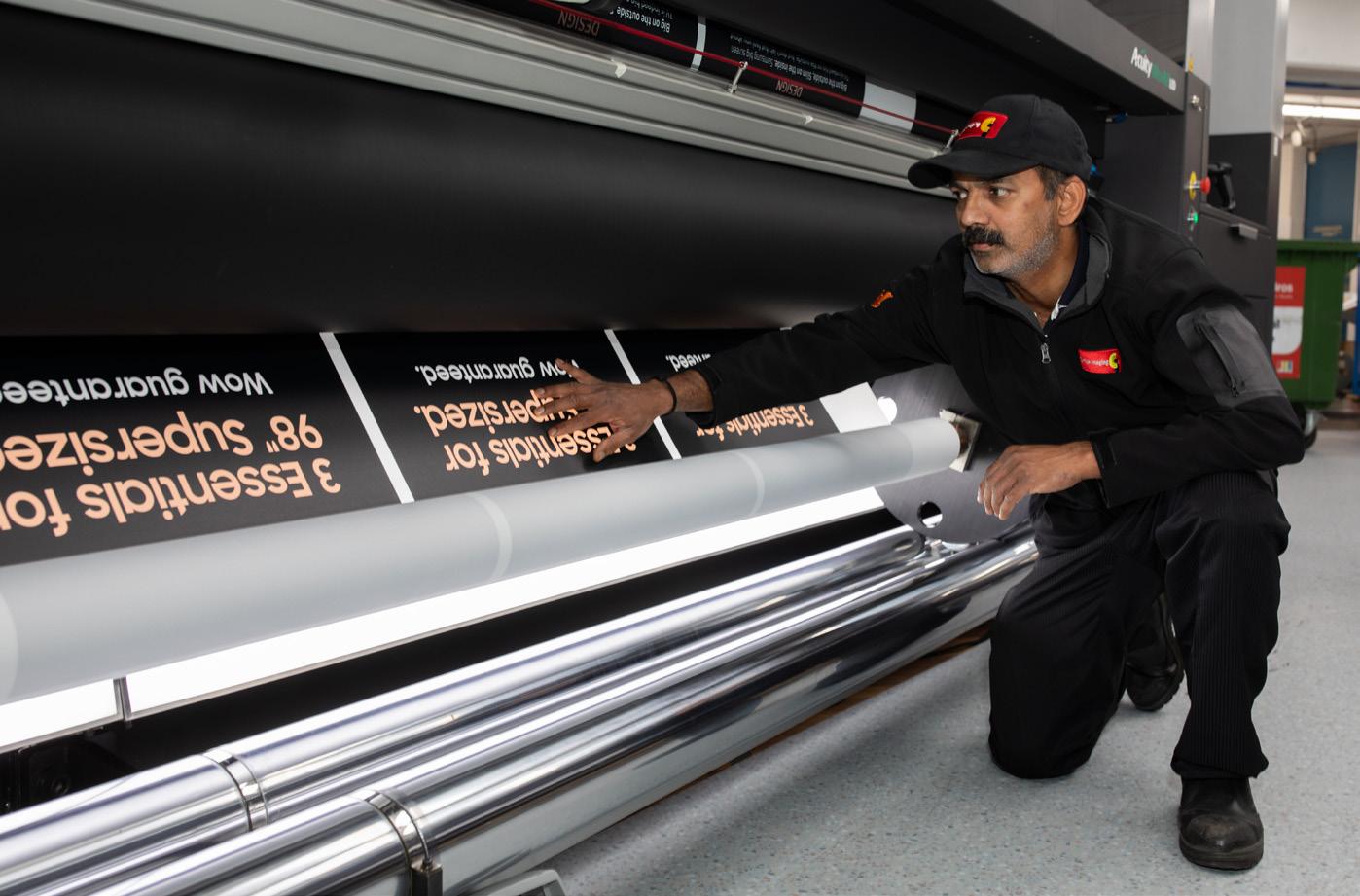
The Acuity Ultra R2 stands out in terms of its versatility in handling various media. Ferrel highlights this as a game-changer, stating, “Once upon a time, you would have to buy one machine for each type of job, but Acuity Ultra R2 offers such versatility that we can print on fabrics, mesh, paper, vinyl, and a whole range of different substrates at very high quality.”
Cactus Imaging has long been a trailblazer in the industry, and their strategic adoption of cutting-edge technology often sets the trend for other businesses.
Neighbour sees this as an opportunity for other local companies to follow suit, saying, “We expect there will be several local companies which will want to emulate their success. This is the perfect platform for printers looking for an industrial printer capable of printing fast and at high quality.”
He anticipates that their recent installations will serve as an example for other Australian companies seeking similar technological upgrades.
Expanding the horizon
The pioneering spirit displayed by Cactus Imaging in embracing the Acuity Ultra R2 has already resonated with other businesses in the region. The second installation of the FUJIFILM Acuity Ultra R2 in the Southern Hemisphere recently took place at Omnigraphics facilities in Melbourne.
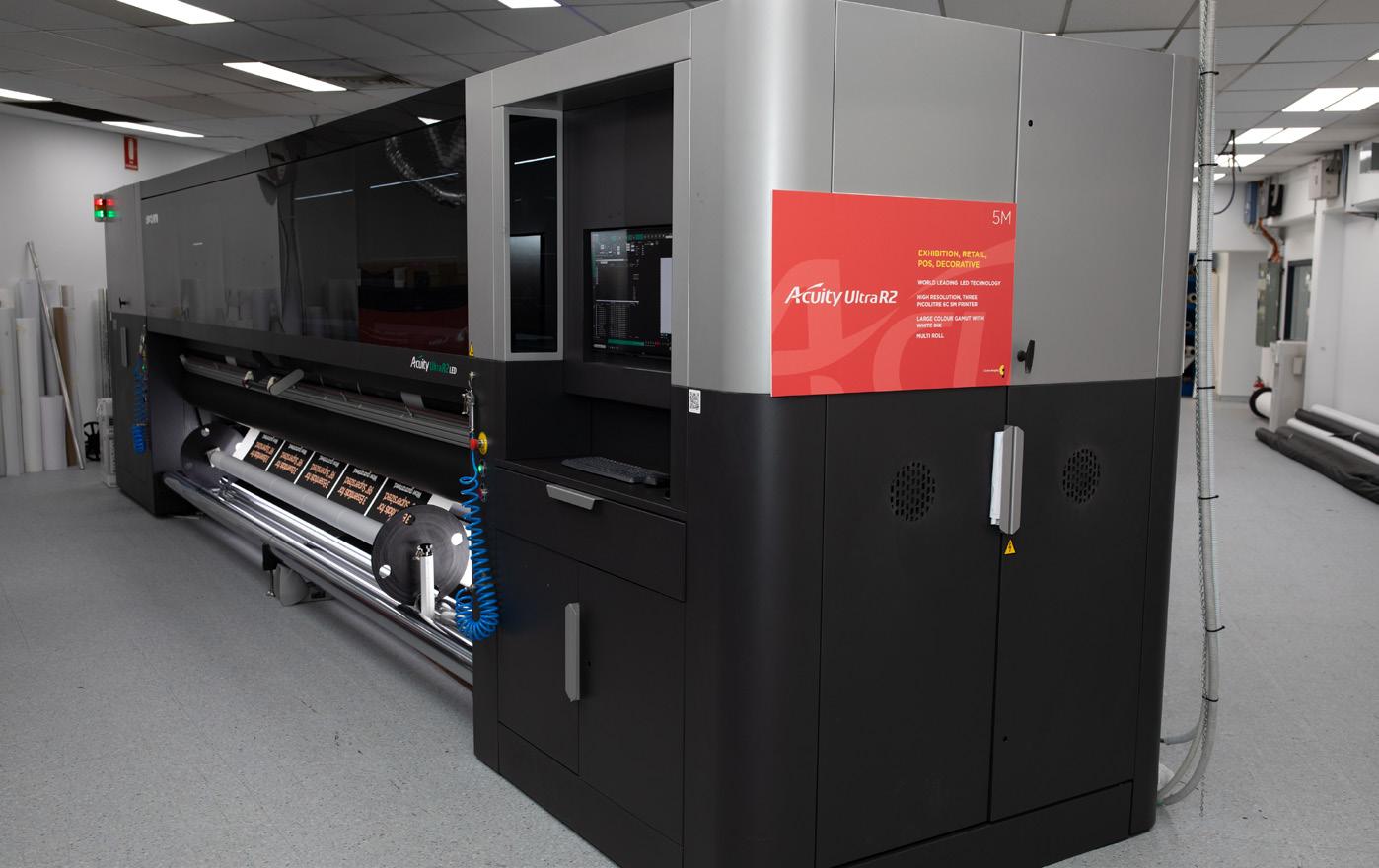
Neighbour reveals, “We have a few other customers interested in this equipment as well. We brought a few customers to see the machine in action at Cactus Imaging. They often come with operators to gain a better understanding of the wide range of improvements implemented since the first generation. This visit, in many cases, demonstrates how they can incorporate the speed and quality of the Acuity Ultra R2 into their production and how quickly their businesses can benefit from the very low operational costs.”
In a rapidly evolving industry, staying at the forefront of technology is imperative. Cactus Imaging’s forward-thinking approach and their collaboration with FUJIFILM not only position them as leaders but also as influencers in the grand format printing sector.
As the technology continues to evolve, it’s apparent that these pioneers will play a crucial role in guiding others toward cost-effective, high-quality, and eco-friendly printing solutions.

